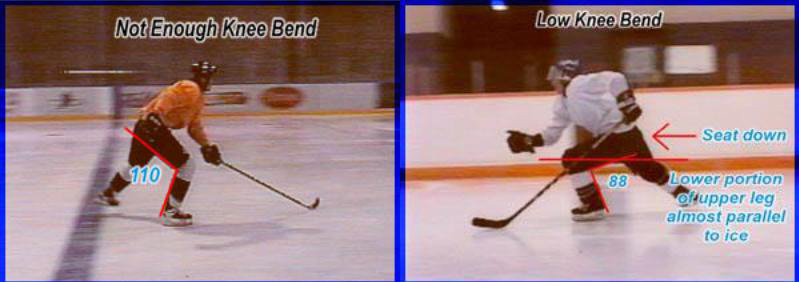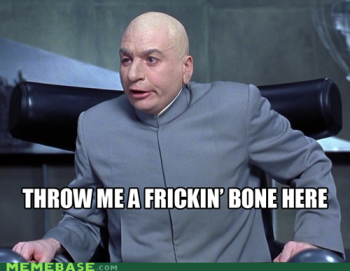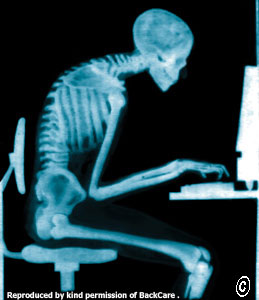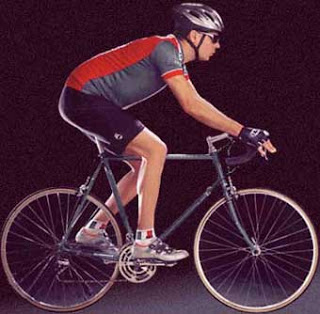This list is stupid because there are NO 10 best exercises for any sport…
But I put out two of these articles a week, sometimes I run out of ideas.
it’s not like I’m asking for sharks with laser beams on their freaking heads….
After a long lockout I figured it’s OK to be a total tool bag and do one of these stupid lists.
#10: Running Sprints
Most Hockey players spend too much time in this position…
During practice and games it’s necessary but what happens is they go to home/ work and…
Everything flexed or “closed down”….and they often opt to train on the bike, cause it makes the quads burn, which does more of the same.
This doesn’t mean the bike is bad, just it’s more of the same….
What they need is to get “opened” back up.
While sprinting isn’t perfect for this because there is still a good amount of flexion, there is also a LOT of hip extension.
The contribution from the posterior chain helps build the ass and hamstrings, which are often neglected in favor for more training of the quads but you NEED glutes and hams to be able to “sit deep” and be an efficient skater.

#9: Squats
“Hockey is a game played on the legs”
Heavy, squatting builds the legs in entirety, as well as the core, and back…
ohh, hey hockey training buzzword…CORE, CORE, CORE…
But you say, “You don’t use your core to squat”.
I say, “unrack 400lbs and stand there….need a strong core now? Not going to stabilize that weight with just your legs are you?”.
#8: BSS or Rear Foot Elevated Split Squat or “These F-ing Things”….
“Hockey is a game played on one leg at a time….”
These are great because they force you to stabilize on one leg throughout the range of motion, much like the skating stride.
Hockey training buzzword.. stabilize, stabilize, stabilize.
Stabilizing is really just the muscles of the leg/ hip and core working in unison to resist and create motion…but anyway…
These can be used as a substitute for regular squatting in some circumstances if you really need to. Mike Boyle does and he’s very successful with it.
They are a little easier on the low back for some and you can usually control the knee angle better.
In my experience, people can get much “deeper” (hip travels below the top of the knee) with these…. which is good because…
Deep squat = Strength at the end range of motion = The strength to maintain a deep skating position
All that put together could/ should mean a longer….faster stride.
#7: Single Leg Deadlifts
Hockey players can never have enough ass (no one can) and get so much quad development from practice and games they need some extra hamstring work in training to balance out the legs….
These fit the bill
These are also great for strengthening the “groin” which is a notorious hockey injury site.
#6: Dumbbell Bench Press
Most hockey players have terrible shoulders.
Bad shoulders = No way in hell you’re pressing with a barbell.
Dumbbells allow you more control over the path of the movement so you’re not as restricted as with a barbell.
That makes dumbbells easier on the shoulders and wrists (again, typical injury sites) you’re safer and in less pain.
Win- Win
#5: DB Incline Bench Row
You need more upper back and lats to un-terriblize help pull those shoulders back and get you into alignment.
Plus the grip work you get will help strengthen the wrists and hands…crucial for shooting, and even holding on to the stick.
#4: Zottoman Curls
“If you see a guy with one hand on his stick, put it in the stands”- Coach
Want to shoot hard?
Want to win puck battles?
Want to keep your stick in your hands instead of in the stands?
If your constantly picking up your stick, passing the puck like a grandma and you shoot “change-ups”, you’re worthless on the rink.
Hope you like splinters in your ass.
You MUST have strong hands and forearms for this game…end of story.\
#3: Pull Aparts
Lots of shoulder injuries occur in this game because the shoulders are out of alignment (pulled forward) and get impinged.
Pull-Aparts are an easy way to pull them back where they need to be and get things lined up again.
Plus these will add muscle to the upper back and rear delts which provides some “body armor” for your shoulders to absorb the hits you’re gonna take and/ or deliver.
#2: Sled Drag
This is another exercise that prioritizes the “opposite” of what’s dominant in a lot of hockey players.
Like I said before….Too many amateur players are all quads and low back…not enough butt, hamstrings and abs. That’s why so many amateur players skate “high” instead of “sitting“ into their skating stance.
This helps fix that while still hammering the quads and low back.
You can also focus on the lateral aspects of the knees and hips…think “groins” by using crossover drags.
#1: Sled Push, Truck Push, Prowler Push….
Get a sled, load it up and do this….Afterwards I won’t need to tell you why it works.
I know what you’re thinking half this stuff trains the opposite muscles from what I use on the rink….
No crap.
- Between all the practices and games you DON’T need more of the same.
- You’re skating probably suffers because of a weakness in the opposing muscle groups which doesn’t allow you to achieve and more importantly maintain proper “deep” skating mechanics.
Just like a car that’s out of alignment a body out of alignment can’t operate optimally, which is kinda the goal of this whole, “training for sports thing”….







Loved this article Roy. I’m heading into my first roller hockey season at age 31 and I’m seriously out of shape. I’m going to be using your article as a guideline for training in hopes I will be ready for the league to start in April. Thanks again man!
Rob,
I used to play roller hockey at Towson University about 8-10 years ago. Great sport, glad to see people are still playing.
Glad this article could help you out some and thanks for reading, it very appreciated.
oh my god… oh my god !! roller hockey??? that is soooooooo……….. cool jk thats gay
Great article. I definately look like the skeletone in the chair after playing. The exercises listed will be good to start doing more consistently.
Melissa,
Thanks for reading….we all look like that skeleton too often.
What if you just want some killer abs it’s beach season baud…#pantysoup #okanaganresident #fellowgenogetter
I’ve been debating getting into hockey but I’m hopelessly out of shape so this is going to be super helpful to kick my ass into shape. Thanks!
Hockey is pretty physically demanding, but it’s also the greatest game on earth.
DO IT…you’ll love it. Glad I could be of some help.
Thanks for this article. I’ve recently added going to the gym 2-3 times a week in addition to my usual hockey 1-2 times a week and was looking for something to point me in the direction of what to focus on for hockey. I really like your writing style too!
Laura,
Thanks, just remember your stride comes from being able to sit into the hips and extend the push leg, while maintaining deep hip flexion on the stance leg. This means ASS and CORE are the most important. Without them you’re going to sit to high in your stance.
Good luck.
Nice article. I am 49 and been playing for three years. I definitely need many of these exercises. I have been doing the Bulgarian Split Squats and seen an overall improvement in leg strength, but I really like the sled pulls and the single leg dead lift ideas. I will definitely be adding those.